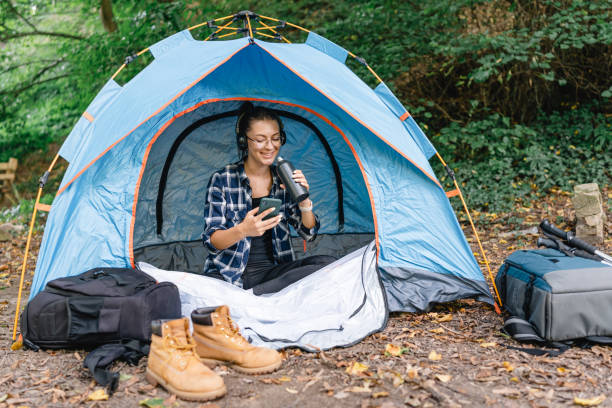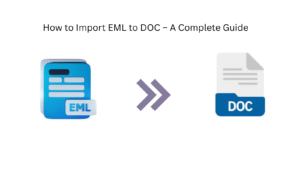
A woman seated inside a bright blue tent drinks from a tumbler while engaging with a phone, enjoying a moment in a serene and peaceful camping environment.
When planning any outdoor event, whether it’s a wedding, festival, or corporate gathering, choosing the right type of shelter is essential to ensure comfort, safety, and aesthetic appeal. Among the many temporary structures available, Pole Tents remain a popular option for a wide variety of occasions. These tents are known for their classic look, high peaks, and spacious interiors, making them a favorite for events that demand both style and function.
At Giant Tents, we’ve helped countless clients select the right tenting solution for their outdoor events. Through our experience in the field of tent rentals and event planning, we’ve seen firsthand how the choice of tent can impact both the logistics and the success of a gathering. This article offers a detailed breakdown of the pros and cons of using tents so you can make an informed decision based on real-world application, expert knowledge, and trusted industry practices.
Understanding the structure and practical aspects of center tents is essential. These tents are supported by center poles and perimeter poles, with the canopy fabric tensioned over the top. While this creates a dramatic visual centerpiece, it also comes with limitations that may or may not suit your specific event needs. Read on to weigh the benefits and drawbacks to see if tents are the best option for your outdoor occasion.
Advantages of Pole Tents
Classic and Elegant Aesthetic
One of the most appealing aspects of pole tents is their elegant and traditional look. The high peaks created by the center poles offer a dramatic and visually stunning profile, making them ideal for weddings, galas, and upscale private events. The design naturally draws the eye upward, adding a sense of grandeur to the space.
Affordability and Cost-Effectiveness
Compared to more elaborate structures like frame or clear span tents, center tents are generally more affordable. They require fewer components and simpler setup procedures, which can reduce labor costs. This makes them a budget-friendly solution for clients who want to maintain quality without overextending financially.
Quick Installation
Pole tents are relatively easy and quick to install, especially on grass or soft ground. The simplicity of the design means that setup and breakdown times are reduced, which is beneficial when venues operate on tight timelines or when rapid transitions are needed between events.
Ideal for Grass Surfaces
The guy lines and stakes used to secure pole tents are best suited for grassy or soft terrain, making these tents ideal for parks, gardens, and lawns. When properly anchored, they provide excellent wind resistance and stability.
Flexible Sizing Options
Pole tents come in a wide range of sizes, from small canopy tents for intimate gatherings to large event tents that can accommodate hundreds of guests. This scalability allows organizers to tailor the shelter to the specific size and nature of the event.
Disadvantages of Pole Tents
Requirement for Soft Ground
One major drawback of pole tents is their dependence on staking, which means they are not well-suited for hard surfaces like asphalt, concrete, or indoor settings. Attempting to install them on such surfaces often requires drilling or added engineering, which can increase both complexity and cost.
Center Pole Obstruction
The iconic center pole that gives the tent its peak also acts as a potential obstruction. For some layouts, especially those requiring large open floor plans (like stages, dance floors, or presentations), the center pole can become an inconvenience and limit usable space.
Space for Staking
Pole tents require a significant amount of extra space around the perimeter for guy lines and stakes. This can be a limiting factor if your event location is restricted in size or has boundary limitations. Unlike frame tents, which can be placed edge-to-edge with buildings or walls, pole tents need clearance on all sides.
Less Weather Flexibility
Although well-secured pole tents can withstand normal weather conditions, they are not ideal for areas with unpredictable or severe weather. Their open sides and flexible structures are more vulnerable to wind and heavy rain than more rigid options like clear span tents or marquee tents.
Design Limitations
While pole tents are visually striking, they may not offer the same customization options as some modern event tents. For clients seeking advanced lighting rigs, ceiling drapery, or climate control features, center tents may present logistical challenges due to their design.
When Should You Choose a Pole Tent?
Pole tents are a great option when the event is held on soft, grassy terrain, and the aesthetic element is a priority. They are especially suitable for weddings, outdoor festivals, and seasonal fairs where traditional charm and affordability matter. However, they may not be the best choice for rooftop events, urban spaces, or professional gatherings that require a polished, modular setup.
Professional Tips from Event Experts
To maximize the benefits of using pole tents, always work with a reputable tent rental company. Professionals can evaluate your venue, estimate dimensions, and ensure the tent is installed according to safety standards. They’ll also provide advice on accessories like flooring, sidewalls, and lighting that complement your tent.
Before finalizing your decision, consider a site inspection. This helps identify whether the ground is suitable for staking and if there’s enough space for the tent and guy lines. It also allows the team to plan for any potential weather-related issues that may arise.
Additionally, understand the local permitting regulations, especially for larger tents. Many municipalities require permits for temporary shelters, and your rental company should be able to guide you through the process.
Conclusion
Pole Tents offer an elegant, practical solution for outdoor event coverage. Their visual appeal and cost-effectiveness make them a go-to choice for weddings, festivals, and community gatherings. However, understanding their limitations such as site requirements and center pole obstructions is key to ensuring they’re the right fit for your occasion.
Choosing the right type of event tent involves weighing form and function with careful consideration of your event’s goals and logistics. When you partner with professionals like those at Giant Tents, you gain access to a wealth of experience that can help transform a good event into a great one. Whether you’re planning a backyard celebration or a large public event,
FAQs
Are pole tents suitable for winter events?
Pole tents are not typically designed for heavy snow or harsh winter conditions. If used during colder months, additional reinforcements and heating systems would be required.
Can lighting and decorations be hung from a pole tent?
Yes, but with some limitations. Because the tent is supported by tension rather than a rigid frame, weight distribution must be carefully managed. Lightweight decorations and indirect lighting are generally preferred.
Do I need a permit for a pole tent?
In most cases, yes. Local regulations often require a temporary structure permit. Your rental provider can help you navigate these requirements.
What size pole tent do I need for 100 guests?
The recommended size for 100 seated guests with tables is around 40×60 feet, depending on the layout and other features such as dance floors or buffet areas.




